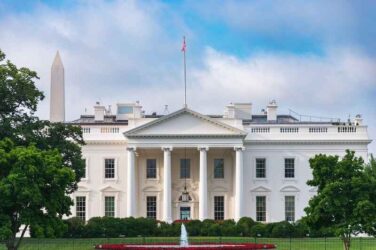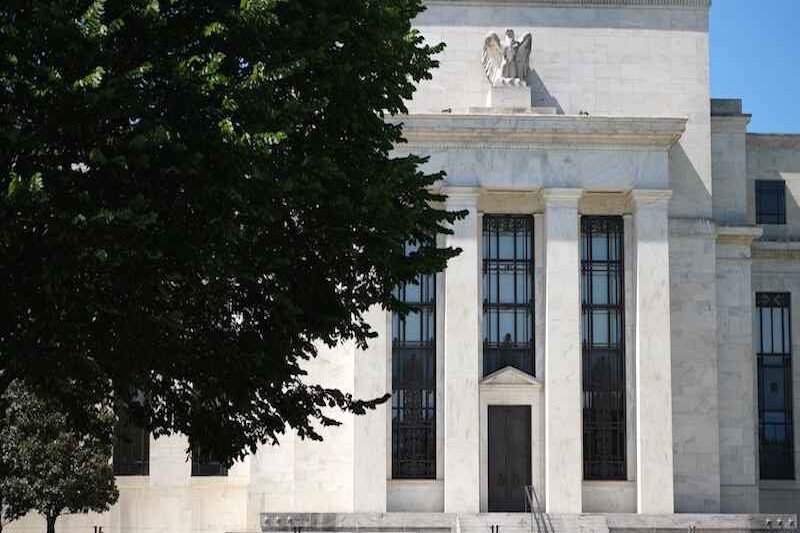Monday Takeaways: A Perfect Storm of Politics, Earnings, and Economic Data
Shah Gilani|July 22, 2024

Election season volatility has arrived with a vengeance.
Tech stocks took a beating last week as politicians from both sides of the aisle put the squeeze on chipmakers over China sales.
And a short-lived small cap surge netted my followers a juicy 150% gain.
Then the weekend brought a political earthquake: Biden’s out, and the markets jumped in response this morning.
And we’re just getting started, folks.
This week brings crucial economic data, plus heavy-hitting earnings… how will the markets react?
Tune in to your Monday Takeaways for my unfiltered analysis on what’s really moving your money.
Click on the thumbnail below to watch.
Transcript
Hey everybody, Shah Gilani here with your Monday Takeaways.
First up, the takeaway from what happened last week. Well, the market sold off last week mostly on the prospect of politics being disruptive.
And some of that came from calls for higher tariffs on Chinese imports into this country. Some of that came from politicians on the left and right calling for, yeah, guess what? More pressure on chipmakers to not sell advanced chips to China. So the tech sector with the semis took a hit and the markets tumbled.
The Nasdaq was down. The Nasdaq 100 was down almost 4%.
So a tumble across the board except for small caps. Although at the end of the week, they got hit also pretty hard. But the small cap pop last week – actually, before the end of last week, small caps registered by the Russell 2000 had jumped 10.5% in five trading sessions. And the takeaway from that was that was kind of about the, oh, this is a rotation time where big tech is cooling down and people are going into, investors and traders are jumping into the undervalued plays that will do well when the Fed cuts.
Why would small caps do well when the Fed cuts? Because for about one-third of small caps, domestic small cap stocks companies, debt is flowing, right? And if rates come down, that’s certainly going to help us. So we saw a jump in that as prospects for a Fed rate cut increased previously.
By the end of last week, the takeaway from all that was, no. Because IWM, the Russell, sold off. And by the way, you should be following me because we put a trade on them. And in two days, on the IWM buying a put spread, we gained, locked in a gain of 150%-plus in two days.
So we have to know when to hold them, know when to fold them. The takeaway from last week was that the VIX closed the week at about 16.5 thereabouts.
That’s the highest it’s been in some time. So you have to keep an eye on the VIX. The VIX could be an entry point. It could signal an entry point to get in if it continues to go higher and higher and stocks sell off.
That’s a takeaway from how to trade the VIX and what happened at the end of last week. Now, already this morning, futures have gotten higher premarket Monday morning here. And why is because over the weekend, President Biden decided, I don’t think it was his choice, that he’s going to step down and not run for reelection.
And everybody seems to be throwing in their lot with Kamala Harris. And that’s done well for her. That’s done well for Democrat fundraising very quickly. So the takeaway from there is all of a sudden the Democrats aren’t dead in the water. They’re back, and that’s why we’re seeing a little futures rally this morning pre-open. But, again, with the VIX at a high at the end of last week, we want to see if this is sustainable as far as this rally is concerned.
So what is the takeaway from the politics? I think more disruption. I think more volatility. Why? Because we’re going to see more pushing, more fighting, more demonstrable rhetoric that this side or that side is going to be harder on China. It’s going to be tougher on tariffs. It’s going to be tougher on what chips can get exported to China, and I don’t think that’s going to really be great for the market. So I think we’re in for some more volatility.
That’s kinda really the immediate stuff and takeaways from last week and what happened over the weekend.
This week, we got a few things that you want to keep an eye on because we’ve got, well, first of all, we got GDP.
First quarter GDP came in at 1.4% growth. So that’s pretty reasonable for a gigantic economy like the United States. But we’ve got the first look at GDP for the second quarter. Okay? That comes this week, and the expectation is for about 1.9.
That’s pretty solid, people.
Back to back one four. And if we get a 1.9 first print, that’s nothing to sneeze at. And that’s going to maybe bring into play, well, what if it’s much higher than 1.9? If the estimate first, look at GDP for Q2 is higher than what but if it’s 2-something high 2s, oh my god, will there be then less likelihood of a rate cut?
So the markets are going to hang on GDP this week. And, what GDP does says a lot about where the economy is likely going and where they’re likely we will get a cut in September from the Fed. So that’s something you definitely want to watch. Take away from there is, a very much higher than expected print on GDP, will probably disrupt the markets a little bit.
A lower than expected print on GDP will probably rally the markets.
Why? Because a lower than expected print means that the economy is slowing down. And if it’s lower than expected, then it also means that the inflation gain that’s included in GDP, which is PCE, yeah, PCE is included in GDP calculations, will likely be lower itself.
Speaking of PCE, personal consumption expenditures, we get a look at that on Friday. Now as far as PCE goes, core in Q1 was a pretty high 3.7% growth. So inflation price prices measured by PCE showed an annual growth rate. In other words, increase in inflation, higher inflation, 3.7% in Q1. Now the expectation is Q2 numbers going to start to look better. That’s the whole. Consensus is for 2.7.
That’s a big drop from 3.7.
If the consensus is for 2.7 and that’s built into GDP, and GDP is lower because of that, we get lower GDP this week, and if we get 2.7 annualized look, our expectation for what PCE will be on an annualized basis, then we’re probably going to rally out of the hole that we fell into last week. So takeaways there are data points once again, you know, front burner stuff here, GDP this week and PCE on Friday. So, one more thing to look at or two things to look at besides earnings. Again, we’ll be cooking this week.
Two of them, I think, are going to be really important. We got Tesla after the close on [Tuesday]. That’s going to be important for the market. And we’ve got Google or Alphabet after the close on [Tuesday].
So Tesla on Tuesday after the close and Google after the close on [Tuesday]. Those may those could move markets one way or the other. So takeaway there is do not take your eyes off the data because data is important.
That’s it for today. I’ll catch you guys next Monday. Cheers, everybody. Be safe out there.

Shah Gilani
Shah Gilani is the Chief Investment Strategist of Manward Press. Shah is a sought-after market commentator… a former hedge fund manager… and a veteran of the Chicago Board of Options Exchange. He ran the futures and options division at the largest retail bank in Britain… and called the implosion of U.S. financial markets (AND the mega bull run that followed). Now at the helm of Manward, Shah is focused tightly on one goal: To do his part to make subscribers wealthier, happier and more free.



